If the last few years are any indication, there are a handful of developments we can expect during the 2024 Stanley Cup Playoffs:
• An early ousting of a top team, likely in spectacular fashion.
• A diverse collection of officiating controversies.
• A diverse collection of injuries no one should be playing through — the operative word being 'should.'
• Connor McDavid reminding us he’s not human (psst Oilers, no more losing streaks, please.)
• Players not named Connor McDavid or any other household equivalent emerging as major difference-makers.
It’s the least eye-popping storyline on this list, but if you’re a fellow hockey nerd, you probably find the latter as intriguing as anything else, if not more so. The rise of lesser-known players offers a unique opportunity for us to expand our understanding of different types of skill sets and the many nuanced ways to create advantages in this sport.
It also serves as an excellent case study of the value of smart acquisitions.
With the NHL trade deadline a week away and a whole lot of nothing happening of late, we’ll presumably start to see contending clubs bolster their rosters with under-the-radar additions, hoping to find gems like the last four Stanley Cup Champions:
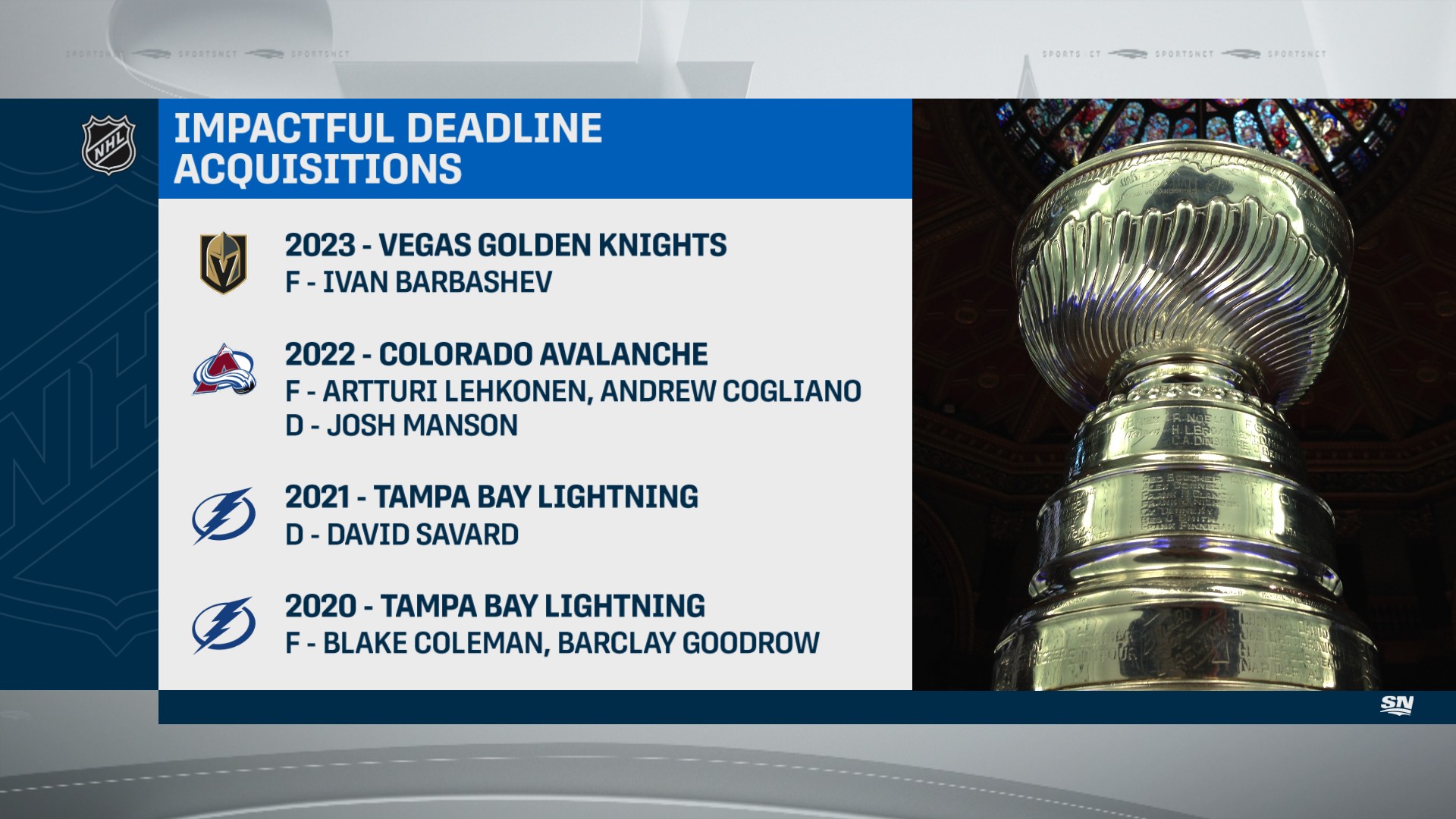
Every depth player in the league has value to offer (yes, even *insert name here*), but identifying those with the potential to really move the needle for a team ready to make a run is tricky. After studying video and digging into some underlying numbers, I've pinpointed three players who I believe can be those guys.
In addition to liking their overall games, all three possess a particular strength that allows them to influence the play at a high rate to the benefit of their team. Let’s break it all down.
Contract: $4.75M cap hit (pending UFA)
Full transparency: I contemplated not including Olofsson on this list. His skillset had me sold, but inconsistencies in his level of engagement — specifically without possession — did not.
While his element is offence, the 28-year-old is not the type who drives play or is dynamic enough with the puck to offset the kind of ineffectiveness I saw at times without it.
When Olofsson isn’t all that engaged, his game is... underwhelming. Slow to make reads and less inclined to move his feet, he’s a step behind mentally and physically. He lets up on plays, skates by opponents instead of getting in their way, and lacks defensive awareness.
When his level of intensity is cranked up two notches, every aspect of his game improves substantially. He forces changes in possession, is a nuisance on the forecheck and backcheck, and regularly disrupts plays as he's cognizant of his surroundings sooner.
Below are five pairs of clips that capture the gist of how these differences commonly appear.
When motivated, Olofsson is tough to play against and impactful all over the ice. He’s hungry for the puck and plays with some feistiness, or "jam," as they say. Here are a couple more visuals of this version of the Swede:

Circling back to his skillset, Olofsson’s toolkit is vast and includes a quick release, quick feet, agility, soft hands, vision, poise, and an understanding of how to protect the puck. While his shot is his most widely recognized strength, his ability to leverage his other assets to consistently make solid, controlled plays in tight spaces is arguably the more valuable one.
It’s not flashy, but this strength translates to all three zones and leads to more frequent advantages courtesy of helping his team alleviate pressure and break the puck out cleanly, generate speed through the neutral zone, and extend offensive zone possessions or turn them into scoring chances — all important ingredients for winning games in the playoffs.
As we can see in the compilation above, he often uses changes in speed/direction to create space and passing lanes for himself in small areas. Particularly impressive is the fact that he does so in a plethora of different ways, smartly (and calmly) reading pressure and support to determine the best approach in a given situation.
Managing the puck effectively some of the time is one thing, but doing so at a high rate year after year is another. Among Buffalo forwards who have played more than five games this season, Olofsson boasts the highest puck touch and passing success rates, and the lowest turnover rate.
He’s also fared quite well in those categories over the last four seasons relative to the team’s regulars at forward (those who played in at least 50 per cent of games):
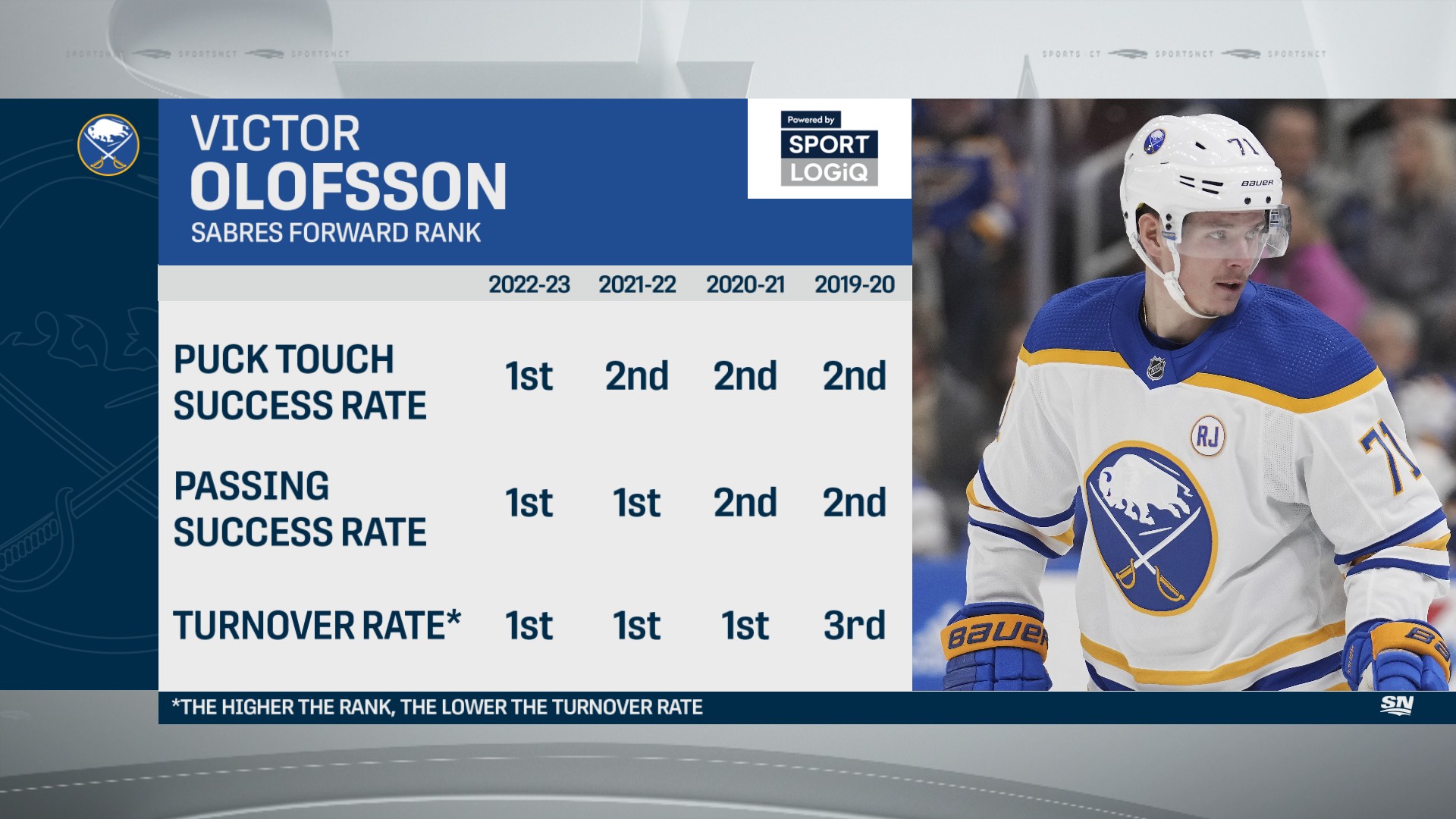
Given the upside we’ve outlined, his history (he’s a three-time 20-goal scorer with respectable point totals in each of his four NHL seasons), and the situation he’s currently in with the Sabres, I see Olofsson as a guy worth taking a chance on.
He’s been a healthy scratch for a bunch of games this season and is experiencing career lows on both the production and ice-time fronts. Translation: the cost to acquire him likely won’t be high and Buffalo might be willing to retain salary. A middle-six support player who can be a threat on the power play, Olofsson may be a sneaky good add if given the opportunity to find his rhythm and regain some confidence on a skilled team that values puck possession and pace. He may also bring that all-important jam more consistently if presented with the fresh start he's been seeking.
Contract: $1.3M cap hit (signed through 2024-25)
Dowd is a bit of a unicorn. Possessing a unique blend of attributes, he’s part energy player, grinder, two-way forward, playmaker, and guy opponents probably want to tell to kick rocks.
He’s responsible defensively, can contribute offensively, and seems annoying as heck to play against thanks to his combination of intelligence and competitiveness. He’s always looking for an edge and makes a ton of clever little plays in different contexts that give him and his team exactly that.
As the following examples illustrate, he’s mastered the art of running subtle interference to keep opponents away from teammates, limit their involvement in the play, or impede their path to the puck. He’s also come up with creative ways to prevent his stick from being tied up (second last clip) and to gain inside position on opponents (last clip and it’s highly amusing).
The man basically operates in playoff mode.
Dowd’s game at large is predicated on quiet details that are rather loud in terms of their impact. His greatest strength is his anticipation, which sees him consistently in the right spot at the right time to influence the play.
The centreman excels in three key departments because of this skill:
1. Supporting teammates
He takes excellent routes to make himself available for the player with possession, moving to space efficiently and proactively. Watch how he provides strong puck support four times throughout this 20-second sequence, culminating in a goal.
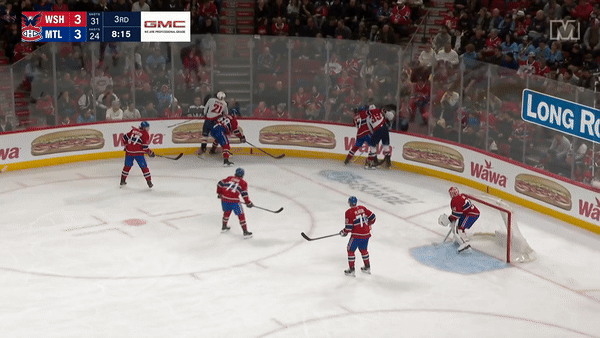
2. Managing space
Players without the puck will sometimes sprint to a spot or attack a specific lane too early, skating themselves into a dead end (too close to the boards, the net, or other players) or giving defenders too much time to cover them. Dowd understands how to preserve pockets of ice by adjusting his speed and strategically timing his lateral movements.
In one of the clips below, he slows his momentum to prolong his route and preserve space in the slot while he awaits a potential pass. In the other, he cuts to the middle lane at the right moment to separate from defenders and find quiet ice.
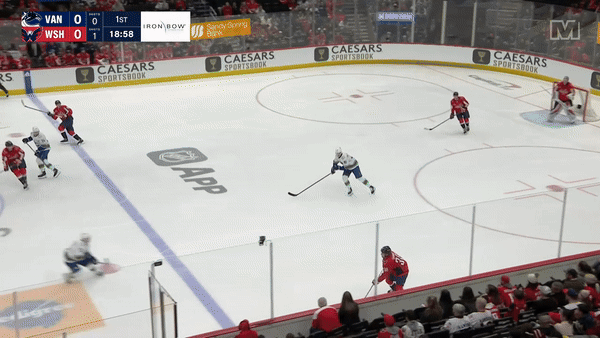
3. Winning pucks back
The 33-year-old's anticipation shines most brightly in this area. From intercepting passes to perpetually being first to pucks, he just constantly seems to be there.
While this aptitude can’t directly be quantified, the Washington forward ranks highly in several categories that reflect it:
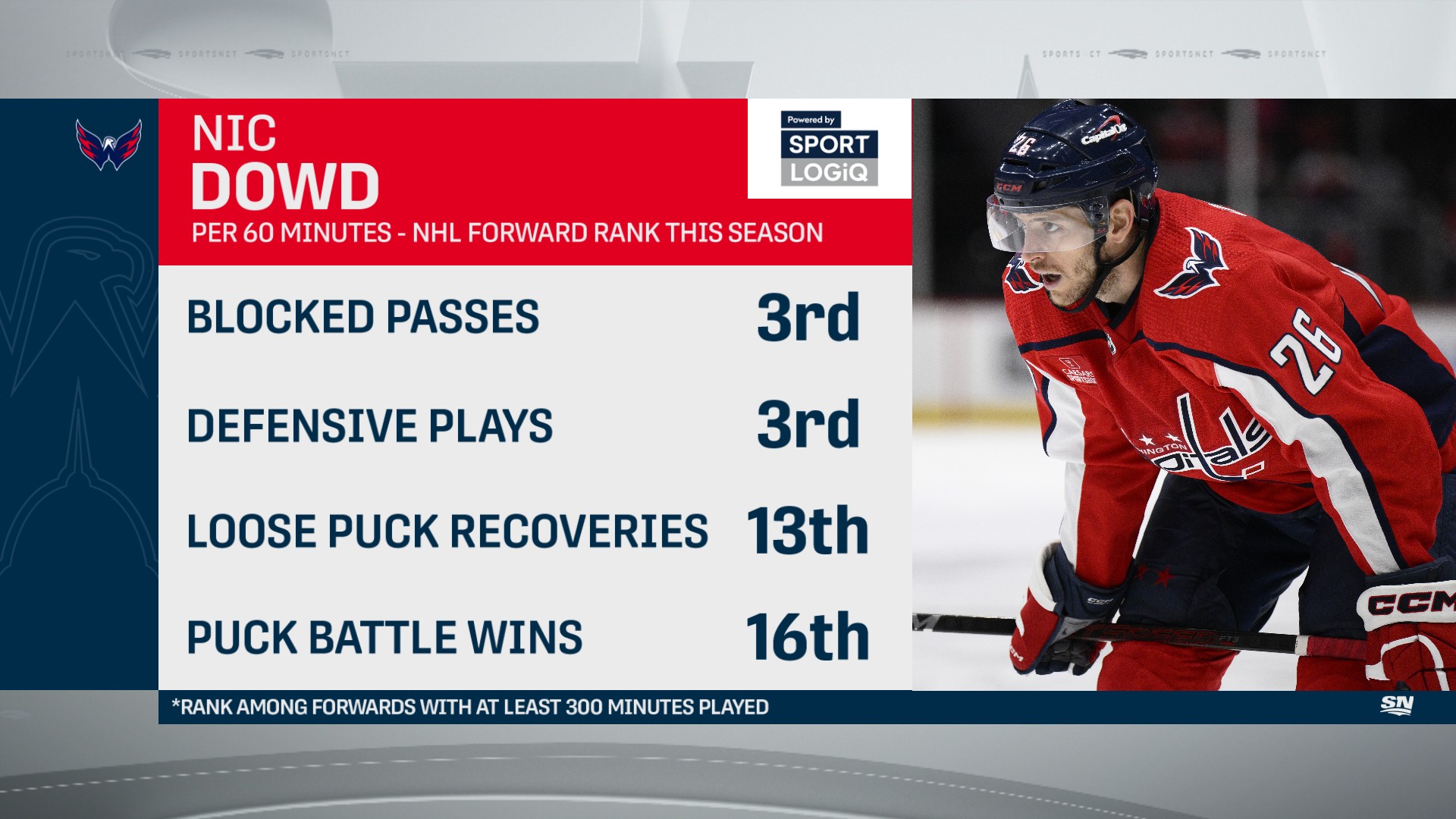
Defensive plays include stick and body checks, plus blocked shots and passes, all of which require strong positioning and timing. Puck battles likewise aren’t typically won without those two elements. There are rumblings that Dowd has drawn interest from many teams and it’s clear why. He’s a Swiss army knife of sorts who would make any club’s bottom six and penalty kill better.
Contract: $2.5M cap hit (pending UFA)
Three words: Fun to watch. Carrier is a shifty blue liner who essentially operates as a fourth forward while still upholding his defensive responsibilities and seemingly never running out of giddy-up and go.
Smooth on his edges and boasting explosive quickness, his skating is the foundation of his game.
It’s not uncommon to see him casually turn on the jets to be the first guy up in the rush... and then the first one back following a possession change, like so:
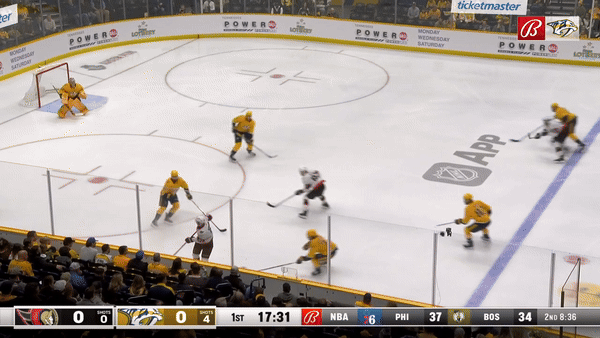
The 27-year-old's offensive instincts are right up there, but his situational awareness is what allows him to leverage his skating to create advantages for his team.
He knows where opponents are on the ice and jumps as soon as he counts enough non-Nashville jerseys caught deep, flat-footed, or heading in the wrong direction — or notices heavy congestion on one side of the ice and an open lane on the other. In short, he senses when the opposition is vulnerable and attacks. Here are a couple of examples:
He’s often equally active and perceptive in the offensive zone, recognizing when to pinch, move into space for a pass, or move out of space to open up ice for a teammate. The following is a great instance of the latter.

He tailors his approach with the puck to the situation as well, using different kinds of passes and shots to generate chances.
Carrier’s success when it comes to retrieving pucks in his own zone and facilitating exits is arguably where his awareness and separation speed/agility prove most valuable. He can escape pressure with a sudden tight turn or make a heads-up first pass that transitions his team from defence to offence in a hurry.
According to Sportlogiq, Carrier sits 17th in recovering dump-ins under pressure and turning them into exits among defencemen with at least 500 minutes played this season. Under those same parameters at 5-on-5, he has the 18th-highest percentage of controlled exits with a successful play after.
Carrier is an effective defender when he’s mindful of gapping up on opponents early off the rush and doesn’t let himself drift too far out of position in-zone at the prospect of offence. Despite his smaller stature (he’s five-foot-11), he isn’t afraid to use his body and plays with some bite.
Last week, he yanked Blake Lizotte’s stick out of his hands and proceeded to enjoy the rest of his shift with a wrong-handed twig as if it were business per usual.

A middle- or bottom-pair defenceman who can play in all situations and is constantly looking to create, Carrier would be a strong addition for a contending team that prioritizes movement and quick-strike offence.
As promising as these three players (or any others) may seem from a skillset standpoint, the fit with whichever team potentially acquires them will ultimately determine their impact to a significant degree. Variables related to coaches, linemates, and playing style all enter the equation in ways that can be difficult to predict.
It’ll be fun to see which players emerge as sneaky good finds when the stakes are high and how many of their names will be engraved in hockey history come June.






